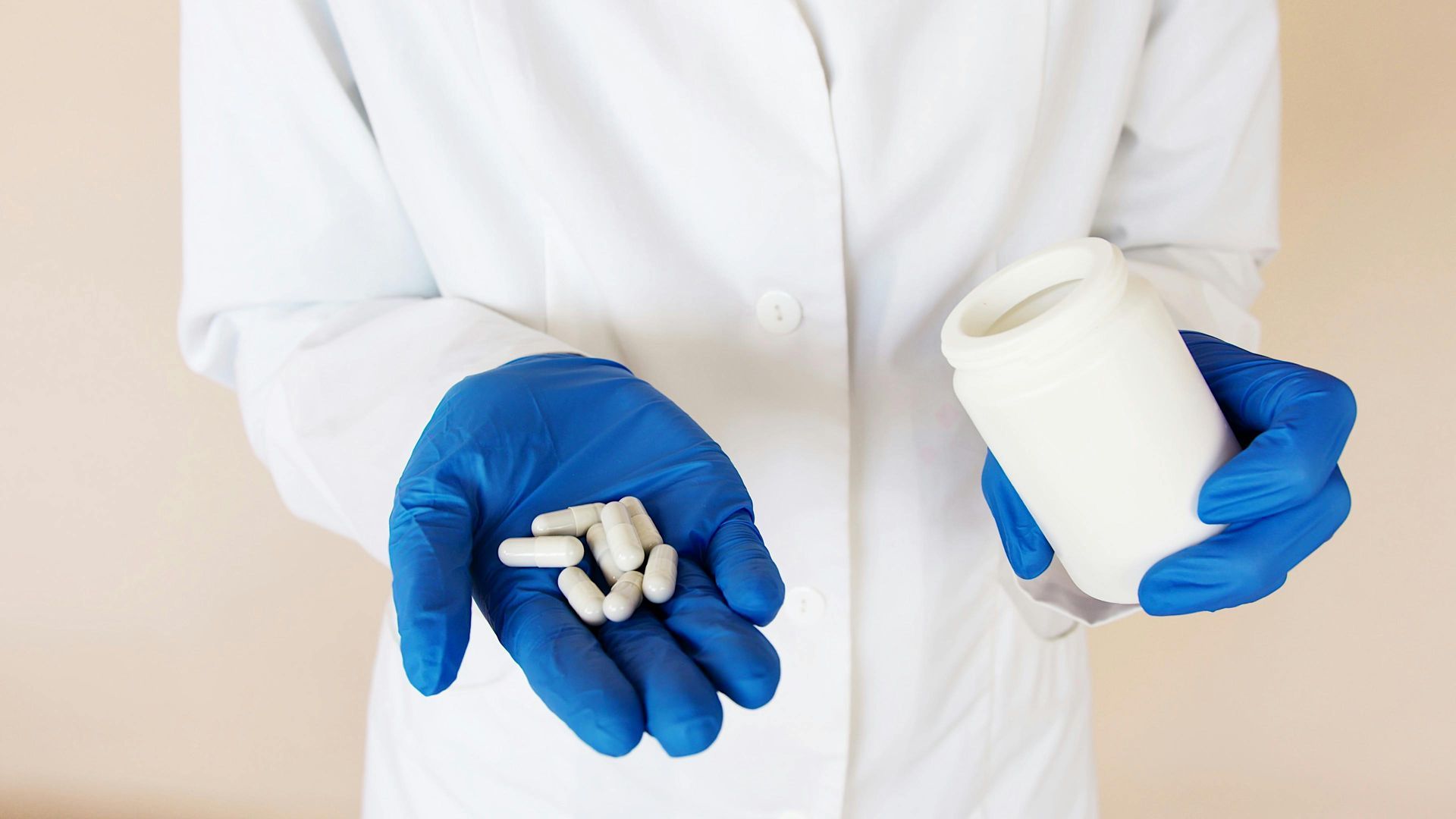TABLETS VS CAPSULES — DOES IT REALLY MATTER?
Your team has discovered an effective drug, tested it, and finally, manufactured it. Mission accomplished. Not so fast — will your API make it to the target site? What if the consumer takes a dosage, but it fails to dissolve? What if it’s rendered inactive by bile salts? If you aren’t 100% certain about your product’s dosage design, it’s figuratively and literally hard work down the drain!
A lot goes into designing the best delivery system for a medication. Some of the factors that need to be taken into consideration are stomach environment, medication formulation, and product absorbability.
TABLETS
Tablets have the advantage of being economical and allowing for a wide variety of colors, shapes, sizes, and coatings. However to be a good tablet-candidate a medication needs to be homogenous. It must have equally sized and weighted particles that do not get separated out before being pressed. Otherwise, the product will be inconsistent and a nightmare for quality control.
Tablet designs are also suitable for medications that require a quick release. Sometimes the binders used to help make the tablets stick can also aid in release.
Tablet forms also allow for cutting, making medication weaning convenient or allowing for flexible dosing.
CAPSULES
For drugs that need a more controlled release, capsules might be a better choice. Some capsules are even made to pass through the entire digestive system without disintegrating, such as the shell used for Concerta.
There are two varieties of capsules: hard shell and soft shell. Soft-shell capsules are the small amber-colored pills used with vitamins D or E They are made out of a single piece of gelatin, and sealed with a single drop after being filled.
Soft capsules are useful for delivering fat to aid in the absorption of fat-soluble compounds.
Hard capsules are the kind you see with antibiotics. They are comprised of two pieces of hard gelatin, with the smaller of the two fitting inside the larger. This design dates all the way back to 1847 when it was patented by the inventor.
One disadvantage capsules have over tablets is that they can be more expensive.
However, interestingly, one advantage capsules have is that consumers perceive them as being better than tablets because of the shell. Consumers feel that the shell dissolves more quickly than a tablet.
MICRO-ENCAPSULATION
Of course, some drugs have issues that aren’t easily resolved via simple tableting or encapsulation methods. APIs that are hydrophobic or poorly absorbable may need to be micro-encapsulated to aid in delivery. Micro-encapsulation can also protect against enzyme degradation, and provide a higher degree of release-control.
There is a lot more that goes into dosage delivery besides what we've touched on here. Check out our classes here at CfPIE to learn about the best dosage systems for your team’s API .
CLASSES
Formulation Design and Troubleshooting of Dry Dosage Forms
Granulation, Tableting and Capsule Technology
The Drug Development Process from Concept to Market
Blog Categories
Stay Informed
Have Questions?
You will be able to find answers to most frequently asked questions here
Since 2001 CfPIE has
Check Out Our Life Science Training Courses.
Need help finding the right life sciences training courses? We can help you make the right choice based on your company's needs.
- AMDE, PK/TK & Drug Metabolism in Drug Discovery and Development
- Advanced Topics in Biostatistics for Non-Statisticians
- Analytical Chemistry Principles for Pharmaceutical Scientists
- Analytical Method Validation for Biologics, Biopharmaceuticals and Other Therapeutic Products
- Aseptic Processing in the Manufacture of Biotech and Pharmaceutical Products
- Auditing and Qualifying Suppliers and Vendors
- Best Practices for an Effective Cleaning Validation Program
- Biostatistics for Non-Statisticians
- CMC Regulatory Compliance Strategy for Cell & Gene Therapy Medicines
- CMC Regulatory Compliance Strategy for Recombinant Proteins, Monoclonal Antibodies, & Biosimilars
- Change Control - GMP Requirements and FDA Enforcement
- Cleanroom Fundamentals - Regulation, Science, Design, Practice, Operation & Management
- Clinical Document Management: A Trial-by-Trial Compliance Approach
- Clinical Trial Project Management, Phase 1-4 Best Practices
- Comprehensive Overview of FDA Regulatory Compliance for Drug and Biotech Products
- Computer System Validation
- CRO, CDMO and Non-Clinical Vendor Management Fundamentals
- Development and Validation of Bioanalytical Assays for Biologics: Quantification (PK) and Immunogenicity Assays
- Effective Document Management for Pharma, Biotech & Medical Device
- Effective Internal and External Quality Assurance Auditing for FDA Regulated Industries
- Ethics in Research - Values for Responsible Conduct of Research
- European Regulatory Procedures - EMA & National Requirements
- FDA Inspections - What Regulators Expect and How to Prepare
- GCP Audits - Best Practices for Ensuring Compliance & Detecting Fraud and Misconduct in Clinical Trials
- GMP Training for the QC Laboratory
- Good Clinical Practices (GCP) & Risk Based Monitoring - Understanding and Implementing Current Global Requirements
- Good Laboratory Practice (GLP) for Nonclinical Laboratory Studies
- Good Manufacturing Practices Training | GMP Course
- Human Error Prevention (HEP) - Risk Factors and Strategies
- Implementing and FDA Compliant Stability Program
- Integration of Risk Management Principles and Activities into the Pharmaceutical Quality System
- Intro to Medical Device Submission - 510(s)s, PMAs & Exemptions
- Introduction to Medical Combination Products
- Introduction to Statistical Analysis of Laboratory Data
- Introduction to Vaccines - CMC Regulatory and Quality Aspects
- Laboratory Equipment Validation and Qualification
- Lyophilization Technology - Application of Scientific Principles
- Marketing & Advertising of Pharmaceutical & Medical Devices
- Medical Device Process Validation Training for Professionals
- Medical Devices: Developing Effective Post Market Surveillance and Compliant Handling Systems
- Molecular Biology Techniques - Applications in the Biotechnology and Pharmaceutical Industries
- OTC Drug and Personal Care Product GMP & FDA Regulation
- Oncology Drug Development Course - A Comprehensive Overview
- Overview of FDA Regulatory Compliance for Medical Devices
- Overview of the New EU Medical Devices Regulations: MDR, IVDR, CE Mark and Compliance, QMS Fundamentals
- Pharmaceutical Root Cause Analysis of Failures & Deviations - Developing an Effective CAPA Strategy
- Preparation of FDA Submissions and Communicating with the FDA
- Preparing the CMC Section for NDAs/INDs/CTDs
- Process Validation for Drugs and Biologics
- QbD - Product & Process Optimization using Design of Experiments
- Quality Assurance/Quality Control for Biologics and Biopharmaceuticals
- RNA Biotechnology - An Introductory Course
- Specifications for APIs & Pharmaceutical Drug Products
- Technical Writing for Pharma, Biotech and Med Devices
- The Drug Development Process from Concept to Market
- US Medical Device & Quality Systems Regulations - Design Controls & Validation
- Writing Effective SOP and Other Process Documents
ABOUT US
The Center for Professional Innovation and Education (CfPIE) provides technical training for Pharmaceutical, Biotech, Medical Device and Skin/Cosmetics professionals. CfPIE offers more than 350 class sessions annually across 80 course titles in multiple formats, such as classroom, on-site, and certification programs.
USEFUL LINKS
STAY INFORMED
Your privacy and trust are important to us. We collect your information only for operational and advisory purposes. We do not and will not sell your private information to a 3rd party. By agreeing to this policy, you are giving us permission to contact you about our services and courses.
All Rights Reserved | CfPIE Inc. | Our courses and materials are copyrighted by CfPIE, Inc. and may not be used or reproduced without the written permission of CfPIE, Inc. management. | In partnership with CCC


